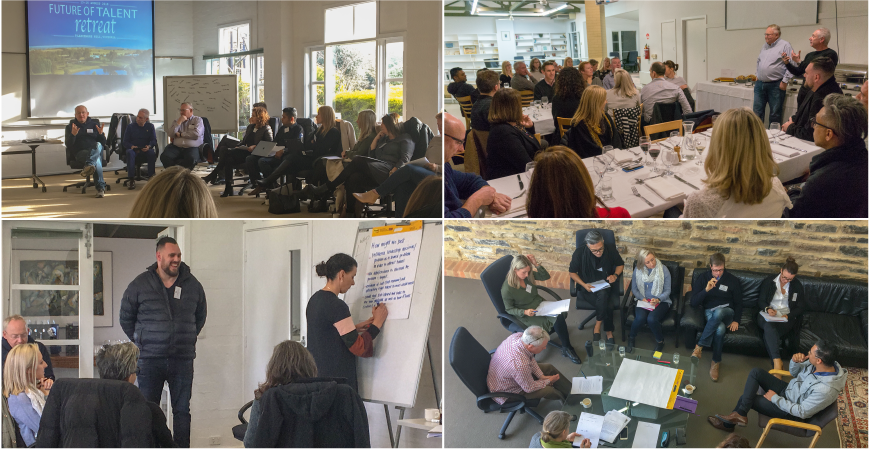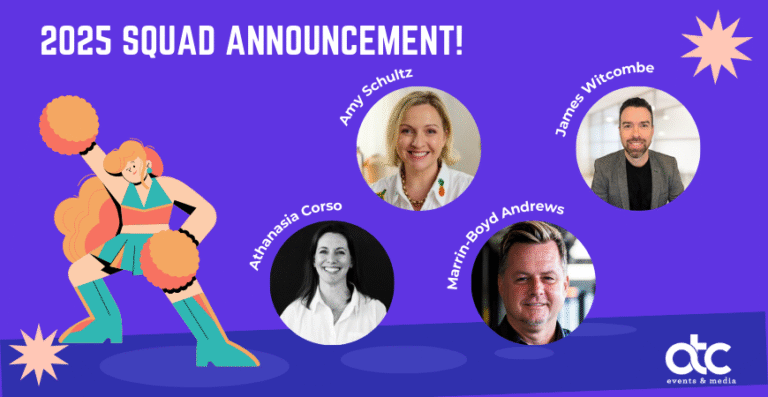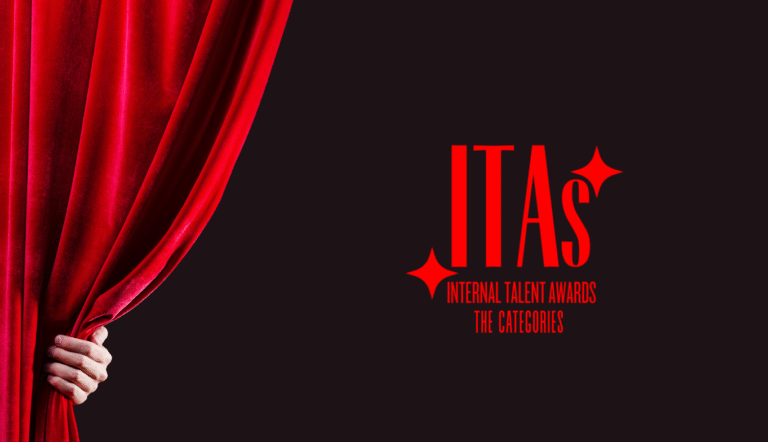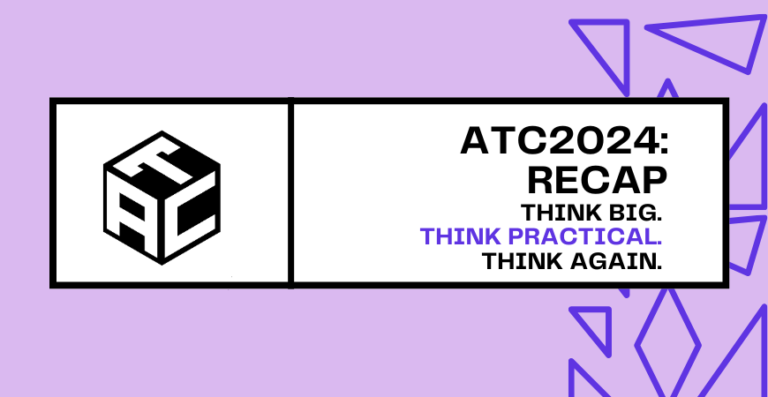The first ever Future of Talent 2018 (FOT2018) retreat brought together some of the most senior Talent Acquisition (TA) leaders from different industries across Australia to find solutions to the most pressing matters affecting recruitment today, and I must say it was a treat.
So what did we learn? Here’s a summary of the key conversations.
1. No machine can read stop signs, yet
Machines powered by A.I. today are currently limited in creativity, adaptability, emotional capability and common sense says speaker Toby Walsh.
Toby is a leading Australian researcher on A.I. and professor at UNSW and he reckons it is still too early to hand over full recruitment responsibility to the machines. Even though humans can be notoriously bad at making decisions, limitations to the A.I. technology mean it is still too early to take humans entirely out of the decision-making process.
However, that doesn’t mean we can’t use the machines to augment our intelligence and help us make smarter decisions. The most important thing about humans is our consciousness and together with A.I., we can harness the power of the machines to hire and recruit better.
2. Training the machines
Which brings us to the next point on trust – specifically how can we trust the machines to deliver what we want. The old adage – garbage in garbage out – still rings true and one of the challenges we face is training the machines using the right data.
Toby warns everyone against using historical data of a best recruit to train the machines because this system is more than likely bias. He uses the example of post codes and how these data can be used by the machines to infer a candidate’s race, which could lead to preferential treatment for a group of applicants while disadvantaging another.
To overcome this, Barbara Hyman, CEO of PredictiveHire, advise that we should use only objective data which has no bio data and to use multiple machine learning models to continuously triangulate the model rather than relying on one version of the truth. You can read more in an article she has written here.
3. The time to build trust is now
While we are on the topic of trust, Toby believes that it is key for organisations to start building trust with their candidates because that would be the most important differentiating factor over the next 10 years.
With the ongoing issue of fake news and the coming to light of the extent to which organisations are collecting and using (whether ethical or not) personal data, it is crucial that we start looking at how we can increase the level of trust people have for our business.
4. If you do not have a data strategy in place, get onto it now
If you think your business isn’t big enough to benefit from using data, think again.
What are you currently basing your recruitment strategy on? Is it gut feel? Is it based on what you see and hear from your senior executives? If your answer is yes to these questions, then it is time for a relook.
Data can help you understand your candidates’ behaviours and pinpoint performance breakdowns for you to better understand each part of your hiring process and know what you need to optimise and what is performing well.
So it is time to start making data-driven decisions, consider hiring a data scientist to help you create your data strategy and have the person monitor the data to avoid “blackbox” situations.
No one company is too small to tap into the potential of what data can bring.
5. Stop obsessing over PDs & CVs
There was some debate raised over the practice of making PDs so unique that we make it hard for ourselves to find the right candidate – why are we so fixated on doing this?
Talent Acquisition has always been obsessed with hiring unicorn candidates and we all know how difficult it is to find them. However, we continue to persist and more often than not, we are left feeling disappointed.
Perhaps it is time to stop creating unique PDs that makes it nigh impossible to fulfil, but start looking for white ponies to paint purple instead?
Rebecca Houghton, founder of BoldHR, also raises doubts on the adequacy of CVs as an indicator for capability and raises the notion of using task-based interviewing process instead to evaluate a candidate’s ability to perform.
Food for thought for everyone.
6. Start looking ahead
More often than not, Talent Acquisition is restricted to a functional role in the company where it exists only to fill jobs. This will not be enough moving forwards. Talent Acquisition must morph into Talent Management in order to stay relevant. This is currently undertaken by a blend of People & Culture positions, however, there are many examples of this changing.
Organisations who are looking to stay ahead of their competition need to be able to anticipate change and be able to get evolve quickly, and Talent Management plays an important role in this process. Talent Management is identified as attracting, identifying, developing, engaging and retaining people who are considered particularly valuable to an organisation. This definition must also evolve to include the contingent workforce and “buy versus build” decisions will increasing become part of Talent Management’s work with the business.
As Talent leaders, we need less guessing and we have to sit down and objectively assess the future. We should be looking ahead and ask ourselves what sort of environment the candidate is going to be working in in three years’ time and how does a successful candidate look like.
We also need to learn how to apply the macro effects of what is happening in broader society and apply them on Talent Acquisition more effectively.
7. Ethics and A.I.
Does A.I. narrow or expand your pool of candidates?
Algorithms have the potential to help you get rid of unconscious bias and enable you to hire Talent in a fair manner. However, the question lies in how do you define what is fair?
According to Toby, there are 21 mathematical algorithm definitions of fair (and possibly more) and the lack of transparency in how these algorithms are written means it is impossible to know for sure if they are truly fair. There is also a general lack of accountability as there isn’t a sure way of assessing these tools for how they perform.
For all we know, these A.I. technologies might be penalising perfectly good candidates simply because they don’t meet the requirements set by the algorithms.
We need to crystalise the nature of the problems we are facing better, identify our pain points more clearly, rather than use A.I. as a blanket solution for everything. It’s easy to assume A.I. is the answer to all our Talent Acquisition problems but we need be aware about how we use this technology and where can it be used.
8. Blockchain primed to become the next big thing in TA
If you are not familiar with this technology, you should probably get onto it soon.
Kevin Wheeler did a fantastic job at demystifying and simplifying the concept of blockchain to show us how it has the potential to impact Talent Acquisition.
In very simple terms, a blockchain is a digital ledger of encrypted records that are organised into groups of data called blocks and shared across a network of computers. These blocks are located on servers called nodes linked together and a record can only be added/altered if all the nodes agree with each other.
Kevin has written a great article on blockchain explaining and exploring deeper into the benefits of blockchain in Talent Acquisition and HR, you can read it here. Or, if you are more of a visual person, here’s a beautifully created visual animation by the people at Reuters explaining how blockchain works – do check it out.
Struggling to gain visibility & control over your workforce? Join us at the Contingent Workforce Workshop 2018 in Melbourne or Sydney to learn the skills, models and case studies you need to solve these challenges!







